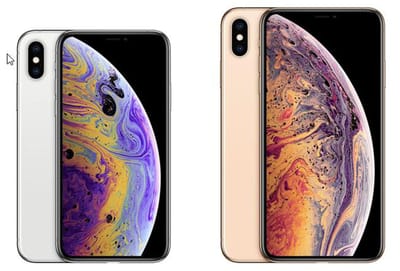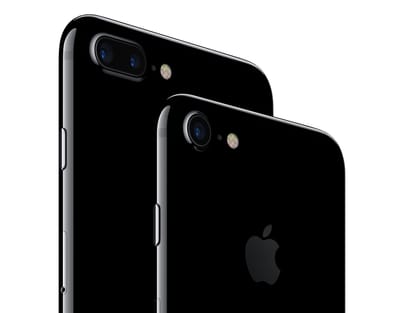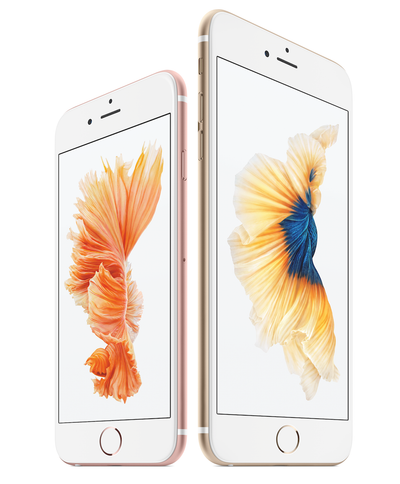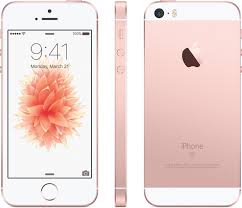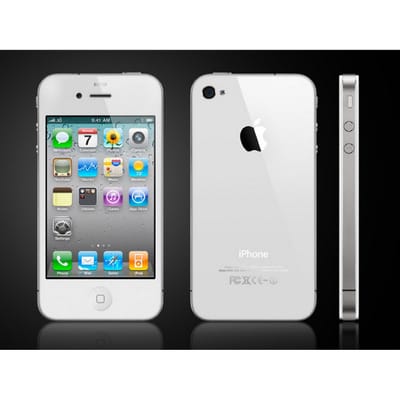Apple
iPhone
by Pek Shu En Chloe 0125598
Chang Li Ya 0125639
Voon Chee Yuan 0125233
Poo Wei Shen 0126256
The History and Evolution of Mobile Phones
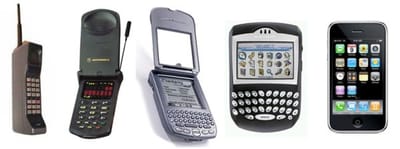
Could you survive without your mobile phone? Cell phones have become incredibly advanced in a relatively short amount of time, and the possibilities for the future are seemingly endless.
In the Beginning
Many of the early cell phones were considered to be “car phones,” as they were too large and cumbersome to carry around in a pocket or purse. However, in 1983, the Motorola DynaTAC 8000x arrived on the market. Though huge by today’s standards, it was considered the first truly mobile phone because it was small enough to carry.
The phone, though incredibly expensive, became a pop culture symbol, showing up on everyone from Gordon Gekko in the movie Wall Street, to high school heartbreaker, Zack Morris, in Saved by the Bell.
“You always have the trendsetters who are not afraid of trying new things and then everyone else follows,” says Patricia Grullon, an Industrial Design instructor at The Art Institute of Fort Lauderdale. “These trendsetters are key to make any product popular.”
However, cell phone use hadn’t spread to the general public yet.
“They were primarily used in the sales and business world, but not often for personal use like you see today,” says Kreg Jones, an industrial designer and Industrial Design instructor at The Art Institute of Philadelphia.
Though the DynaTac and subsequent models were smaller, mobile, and ultimately cooler, they still had their faults. Bulky, luggable models like the Nokia Mobira Talkman and the Motorola 2900 Bag Phone had longer battery lives and more talk time, making them more popular at the time. As the technology advanced, cell phone companies figured out how to pack all the features their customers wanted into a smaller, portable, more affordable model.
A Shifting Purpose
Early cell phones were just for talking. Gradually, features like voicemail were added, but the main purpose was talk. Eventually, cell phone manufacturers began to realize that they could integrate other technologies into their phone and expand its features. The earliest smartphones let users access email, and use the phone as a fax machine, pager, and address book.
In recent years, the purpose of the cell phone has shifted from a verbal communication tool to a multimedia tool, often adopting the name “mobile device” rather than being called a phone at all. We now use our cell phones more for surfing the web, checking email, snapping photos, and updating our social media status than actually placing calls.
“Rapidly expanding software titles, better screen resolution, and constantly improved interface make cell phones easier to navigate, and more fun to use. Add to that an expanding capacity that can hold as much memory as a computer would just a few years ago, and you can see why it’s an exploding market,” Grullon says.
The cell phones of today are also replacing our other gadgets, such as cameras and video cameras. When cameras were first introduced on phones, the images were low quality and the feature was considered to just be an extra.
“Now, we're seeing a very fast shift to where consumers don't even bother carrying their point-and-shoot cameras anymore, and just use their cell phones,” says Jamie Lendino, a tech journalist and senior mobile analyst for PCMag.com.
Modern day smartphones — the Apple iPhone in particular — changed everything that consumers expect from their phones. The app market has transformed the phone into a virtual toolbox with a solution for almost every need.
Changing Shape
It’s not just the technology of the cell phone that has changed over time, the physical design has also gone through a rollercoaster of changes. Original car phones and bag phones were as large as modern day computers and just as heavy.
“Like computers, the cell phone over time has become drastically smaller,” Jones says. He recalls reviewing focus group results while working with Ericsson GE Mobile in the mid-90s. “Customer research showed that the phone was so small that the user interface was unacceptable. Though the phone may have functioned perfectly well, their opinion was partially driven by the perception that the phone was simply too small.”
Eventually, customers’ perceptions shifted and they demanded a smaller, sleeker cell phone.
Just in recent years, cell phone designs have actually started to become larger and simpler, making room for a larger screen and less buttons. Because phones have become mobile media devices, the most desirable aspect is a large, clear, high-definition screen for optimal web viewing. Even the keyboard is being taken away, replaced by a touch screen keyboard that only comes out when you need it. The most obvious example of this is the Apple iPhone and subsequent competitors like the Droid models.
Future of the Cell Phone
The cell phone has changed and developed so rapidly in the past decade that it seems as though almost anything you can imagine is possible for the future. According to Jones, the convergence of all our tech gadgets into one mobile device will continue to advance. He anticipates that “the majority of the hardware and the software can be moved to ‘the cloud’ and the product will mainly be comprised of the input and the display.”
Lendino expects that the smartphone will eventually completely take over the market.
“Within a few more years, I expect regular cell phones to disappear entirely. We may not even call smartphones ‘smart’ anymore and just drop the term altogether, the way we stopped saying ‘color TV’ and ‘hi-fi stereo’,” he says.
Grullon believes that cell phones of the future will be adapted to appeal more to our emotional senses.
“I believe in the future, cell phones will become even more naturally in sync with our biological reflexes and processes such as eye movement, thought processes, kinesthetic, cultural preferences,” she says.
It’s not just about how we will change cell phone, Grullon says.
“The question is, how will the cell phone change us?”
References:
The History and Evolution of Cell Phones. (n.d.). Retrieved from: https://www.artinstitutes.edu/about/blog/the-history-and-evolution-of-cell-phones
In the Beginning
Many of the early cell phones were considered to be “car phones,” as they were too large and cumbersome to carry around in a pocket or purse. However, in 1983, the Motorola DynaTAC 8000x arrived on the market. Though huge by today’s standards, it was considered the first truly mobile phone because it was small enough to carry.
The phone, though incredibly expensive, became a pop culture symbol, showing up on everyone from Gordon Gekko in the movie Wall Street, to high school heartbreaker, Zack Morris, in Saved by the Bell.
“You always have the trendsetters who are not afraid of trying new things and then everyone else follows,” says Patricia Grullon, an Industrial Design instructor at The Art Institute of Fort Lauderdale. “These trendsetters are key to make any product popular.”
However, cell phone use hadn’t spread to the general public yet.
“They were primarily used in the sales and business world, but not often for personal use like you see today,” says Kreg Jones, an industrial designer and Industrial Design instructor at The Art Institute of Philadelphia.
Though the DynaTac and subsequent models were smaller, mobile, and ultimately cooler, they still had their faults. Bulky, luggable models like the Nokia Mobira Talkman and the Motorola 2900 Bag Phone had longer battery lives and more talk time, making them more popular at the time. As the technology advanced, cell phone companies figured out how to pack all the features their customers wanted into a smaller, portable, more affordable model.
A Shifting Purpose
Early cell phones were just for talking. Gradually, features like voicemail were added, but the main purpose was talk. Eventually, cell phone manufacturers began to realize that they could integrate other technologies into their phone and expand its features. The earliest smartphones let users access email, and use the phone as a fax machine, pager, and address book.
In recent years, the purpose of the cell phone has shifted from a verbal communication tool to a multimedia tool, often adopting the name “mobile device” rather than being called a phone at all. We now use our cell phones more for surfing the web, checking email, snapping photos, and updating our social media status than actually placing calls.
“Rapidly expanding software titles, better screen resolution, and constantly improved interface make cell phones easier to navigate, and more fun to use. Add to that an expanding capacity that can hold as much memory as a computer would just a few years ago, and you can see why it’s an exploding market,” Grullon says.
The cell phones of today are also replacing our other gadgets, such as cameras and video cameras. When cameras were first introduced on phones, the images were low quality and the feature was considered to just be an extra.
“Now, we're seeing a very fast shift to where consumers don't even bother carrying their point-and-shoot cameras anymore, and just use their cell phones,” says Jamie Lendino, a tech journalist and senior mobile analyst for PCMag.com.
Modern day smartphones — the Apple iPhone in particular — changed everything that consumers expect from their phones. The app market has transformed the phone into a virtual toolbox with a solution for almost every need.
Changing Shape
It’s not just the technology of the cell phone that has changed over time, the physical design has also gone through a rollercoaster of changes. Original car phones and bag phones were as large as modern day computers and just as heavy.
“Like computers, the cell phone over time has become drastically smaller,” Jones says. He recalls reviewing focus group results while working with Ericsson GE Mobile in the mid-90s. “Customer research showed that the phone was so small that the user interface was unacceptable. Though the phone may have functioned perfectly well, their opinion was partially driven by the perception that the phone was simply too small.”
Eventually, customers’ perceptions shifted and they demanded a smaller, sleeker cell phone.
Just in recent years, cell phone designs have actually started to become larger and simpler, making room for a larger screen and less buttons. Because phones have become mobile media devices, the most desirable aspect is a large, clear, high-definition screen for optimal web viewing. Even the keyboard is being taken away, replaced by a touch screen keyboard that only comes out when you need it. The most obvious example of this is the Apple iPhone and subsequent competitors like the Droid models.
Future of the Cell Phone
The cell phone has changed and developed so rapidly in the past decade that it seems as though almost anything you can imagine is possible for the future. According to Jones, the convergence of all our tech gadgets into one mobile device will continue to advance. He anticipates that “the majority of the hardware and the software can be moved to ‘the cloud’ and the product will mainly be comprised of the input and the display.”
Lendino expects that the smartphone will eventually completely take over the market.
“Within a few more years, I expect regular cell phones to disappear entirely. We may not even call smartphones ‘smart’ anymore and just drop the term altogether, the way we stopped saying ‘color TV’ and ‘hi-fi stereo’,” he says.
Grullon believes that cell phones of the future will be adapted to appeal more to our emotional senses.
“I believe in the future, cell phones will become even more naturally in sync with our biological reflexes and processes such as eye movement, thought processes, kinesthetic, cultural preferences,” she says.
It’s not just about how we will change cell phone, Grullon says.
“The question is, how will the cell phone change us?”
References:
The History and Evolution of Cell Phones. (n.d.). Retrieved from: https://www.artinstitutes.edu/about/blog/the-history-and-evolution-of-cell-phones
History of Mobile phones
About Us
Apple Inc. is an American multinational technology company headquartered in Cupertino, California, that designs, develops, and sells consumer electronics, computer software, and online services. It is considered one of the Big Four of technology along with Amazon, Google, and Facebook.[6][7]
The company's hardware products include the iPhone smartphone, the iPad tablet computer, the Mac personal computer, the iPodportable media player, the Apple Watch smartwatch, the Apple TV digital media player, and the HomePod smart speaker. Apple's software includes the macOS and iOS operating systems, the iTunes media player, the Safari web browser, and the iLife and iWorkcreativity and productivity suites, as well as professional applications like Final Cut Pro, Logic Pro, and Xcode. Its online services include the iTunes Store, the iOS App Store and Mac App Store, Apple Music, and iCloud.
Apple was founded by Steve Jobs, Steve Wozniak, and Ronald Wayne in April 1976 to develop and sell Wozniak's Apple I personal computer. It was incorporated as Apple Computer, Inc., in January 1977, and sales of its computers, including the Apple II, grew quickly. Within a few years, Jobs and Wozniak had hired a staff of computer designers and had a production line. Apple went public in 1980 to instant financial success. Over the next few years, Apple shipped new computers featuring innovative graphical user interfaces, such as the original Macintosh in 1984, and Apple's marketing advertisements for its products received widespread critical acclaim. However, the high price tag of its products and limited software titles caused problems, as did power struggles between executives at the company. In 1985, Wozniak stepped away from Apple, while Jobs resigned and founded a new company—NeXT—with former Apple employees.
References:
Apple Inc. (2019). Retrieved from https://en.wikipedia.org/wiki/Apple_Inc.
The company's hardware products include the iPhone smartphone, the iPad tablet computer, the Mac personal computer, the iPodportable media player, the Apple Watch smartwatch, the Apple TV digital media player, and the HomePod smart speaker. Apple's software includes the macOS and iOS operating systems, the iTunes media player, the Safari web browser, and the iLife and iWorkcreativity and productivity suites, as well as professional applications like Final Cut Pro, Logic Pro, and Xcode. Its online services include the iTunes Store, the iOS App Store and Mac App Store, Apple Music, and iCloud.
Apple was founded by Steve Jobs, Steve Wozniak, and Ronald Wayne in April 1976 to develop and sell Wozniak's Apple I personal computer. It was incorporated as Apple Computer, Inc., in January 1977, and sales of its computers, including the Apple II, grew quickly. Within a few years, Jobs and Wozniak had hired a staff of computer designers and had a production line. Apple went public in 1980 to instant financial success. Over the next few years, Apple shipped new computers featuring innovative graphical user interfaces, such as the original Macintosh in 1984, and Apple's marketing advertisements for its products received widespread critical acclaim. However, the high price tag of its products and limited software titles caused problems, as did power struggles between executives at the company. In 1985, Wozniak stepped away from Apple, while Jobs resigned and founded a new company—NeXT—with former Apple employees.
References:
Apple Inc. (2019). Retrieved from https://en.wikipedia.org/wiki/Apple_Inc.

History of apple

Before Apple Computer INC (PRE-1976)
Founding, Incorp, And IPO (1976-1980)
Lisa And Macintosh (1981-1985)
The Decline (1986-1997)
Apple's Comeback (1998-2005)
Transition to Intel (2005-2007)
Widespread Success (2007-2011)
The Post- Steve Jobs Era (2011-present)
Apple Inc., formerly Apple Computer, Inc., is a multinational corporation that creates consumer electronics, computer software, and commercial servers. Apple’s core product lines are the iPad, iPhone, iPod music player, and Macintosh computer line-up. Founders Steve Jobs and Steve Wozniak effectively created Apple Computer on April 1, 1976, with the release of the Apple I, and incorporated the company on January 3, 1977, in Cupertino, California. For more than two decades, Apple Computer was predominantly a manufacturer of personal computers, including the Apple II, Macintosh, and Power Mac lines, but it faced rocky sales and low market share during the 1990s. Jobs, who had been ousted from the company in 1985, returned to become Apple’s CEO in 1996 after his company NeXT was bought by Apple Inc., and he brought with him a new corporate philosophy of recognizable products and simple design. With the introduction of the successful iPod music player in 2001, Apple established itself as a leader in the consumer electronics industry, dropping “Computer” from its name. The company is now also known for its iOS range of products that began with the iPhone, iPod Touch and now iPad. As of 2011, Apple is currently the largest technology firm in the world with its stock market value reaching $500 billion in March 2012. Their revenue for the year 2011 was $127.8 billion in sales.
References:
History of Apple Inc. (n.d.). Retrieved from http://www.historyofapple.com/apple-history/
Founding, Incorp, And IPO (1976-1980)
Lisa And Macintosh (1981-1985)
The Decline (1986-1997)
Apple's Comeback (1998-2005)
Transition to Intel (2005-2007)
Widespread Success (2007-2011)
The Post- Steve Jobs Era (2011-present)
Apple Inc., formerly Apple Computer, Inc., is a multinational corporation that creates consumer electronics, computer software, and commercial servers. Apple’s core product lines are the iPad, iPhone, iPod music player, and Macintosh computer line-up. Founders Steve Jobs and Steve Wozniak effectively created Apple Computer on April 1, 1976, with the release of the Apple I, and incorporated the company on January 3, 1977, in Cupertino, California. For more than two decades, Apple Computer was predominantly a manufacturer of personal computers, including the Apple II, Macintosh, and Power Mac lines, but it faced rocky sales and low market share during the 1990s. Jobs, who had been ousted from the company in 1985, returned to become Apple’s CEO in 1996 after his company NeXT was bought by Apple Inc., and he brought with him a new corporate philosophy of recognizable products and simple design. With the introduction of the successful iPod music player in 2001, Apple established itself as a leader in the consumer electronics industry, dropping “Computer” from its name. The company is now also known for its iOS range of products that began with the iPhone, iPod Touch and now iPad. As of 2011, Apple is currently the largest technology firm in the world with its stock market value reaching $500 billion in March 2012. Their revenue for the year 2011 was $127.8 billion in sales.
References:
History of Apple Inc. (n.d.). Retrieved from http://www.historyofapple.com/apple-history/
Iphone Models
Evolution of Iphone
June 29, 2007: iPhone

July 11, 2008: iPhone 3G
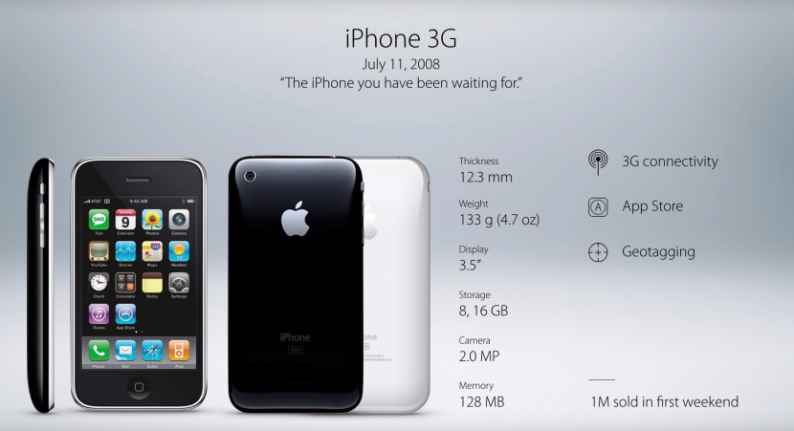
June 19, 2009: iPhone 3GS

June 24, 2010: iPhone 4

October 14, 2011: iPhone 4S
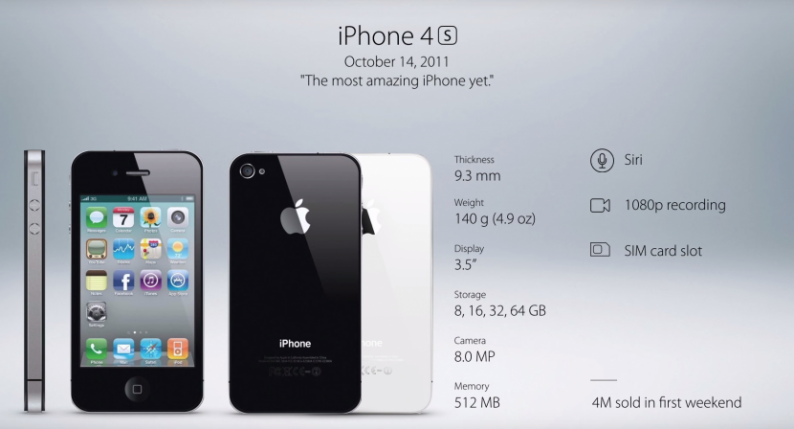
September 21, 2012: iPhone 5
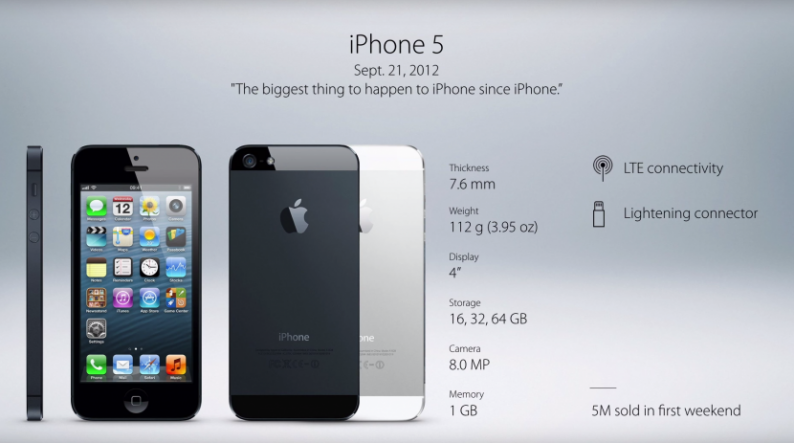
September 20, 2013: iPhone 5S & iPhone 5C
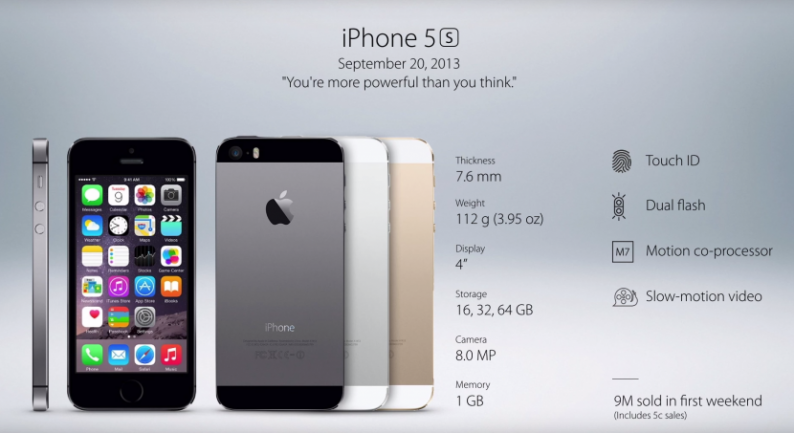
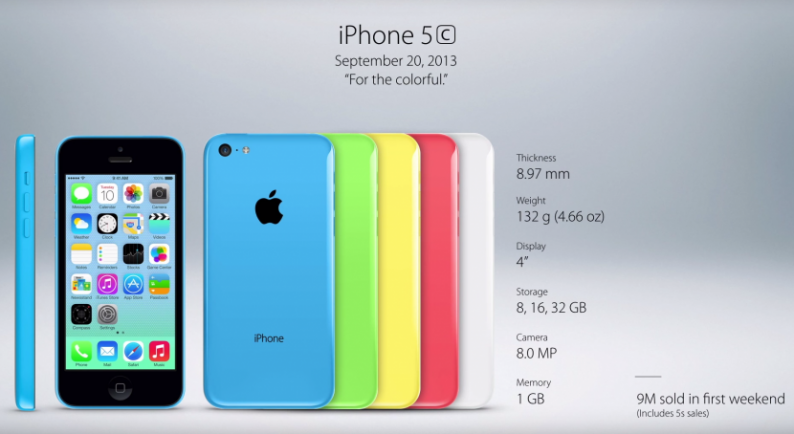
September 19, 2014: iPhone 6 & 6 Plus
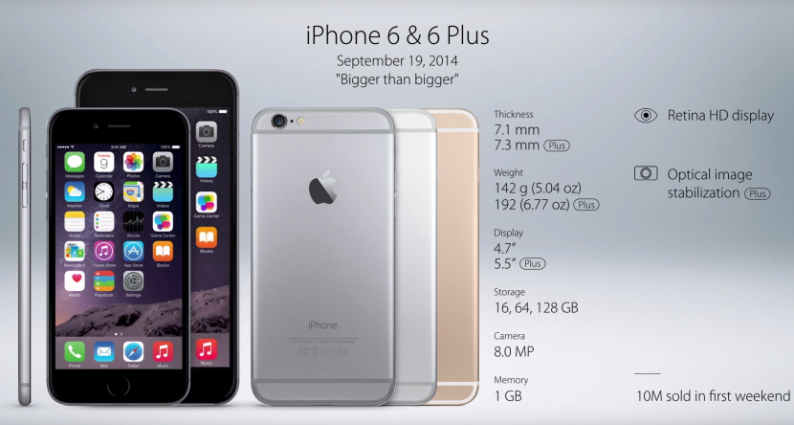
September 19, 2015: iPhone 6s & 6s Plus

March 31, 2016: iPhone SE
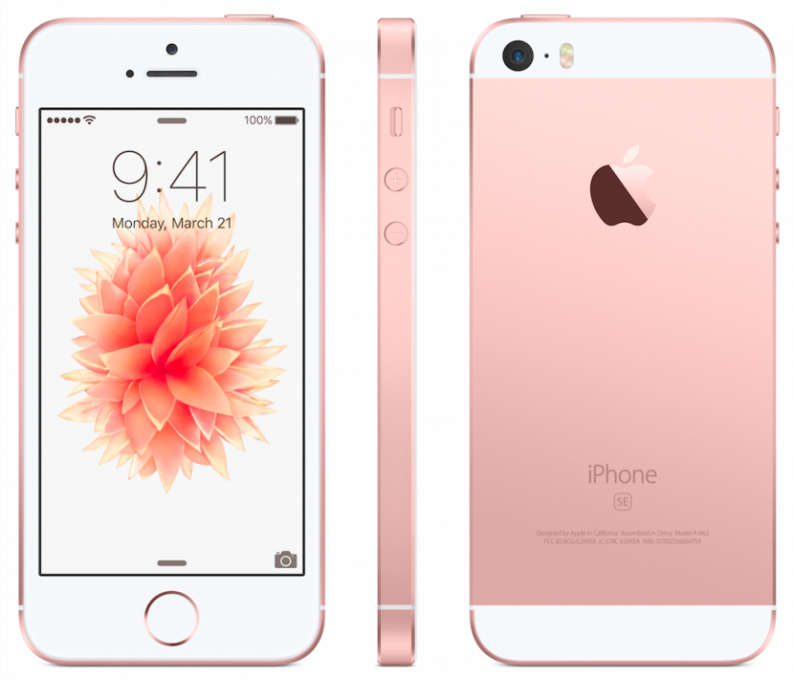
September 16, 2016: iPhone 7 & 7 Plus
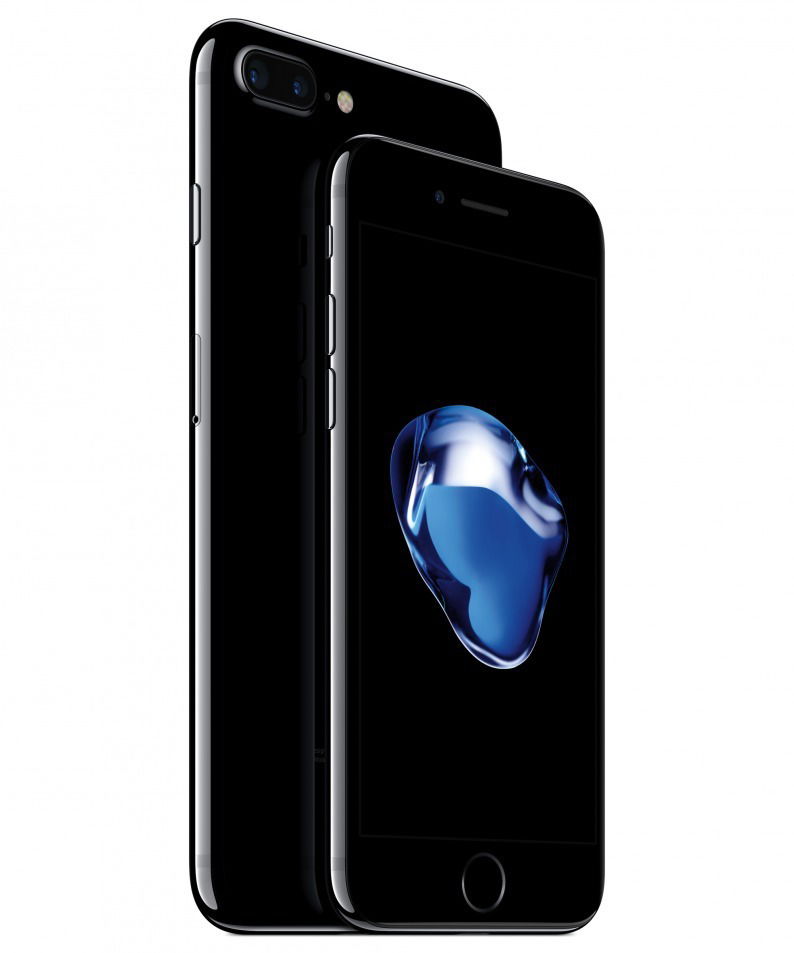
September 22, 2017: iPhone 8 & 8 Plus
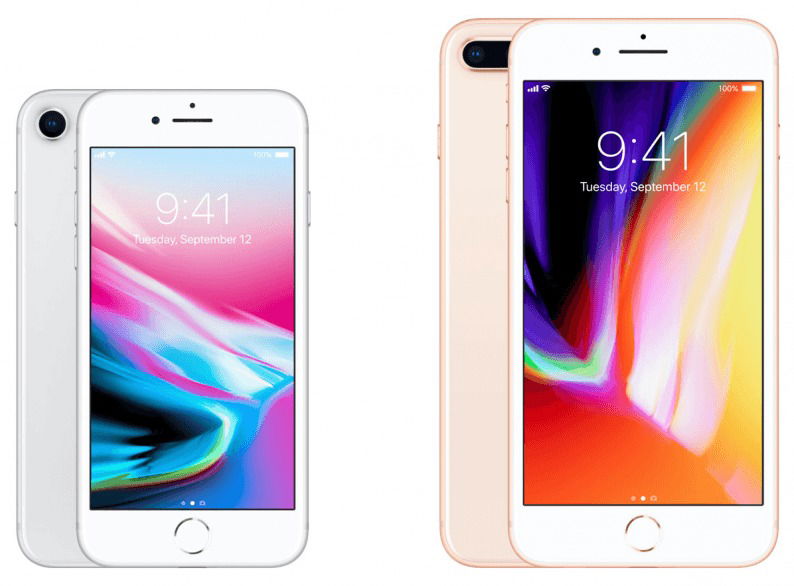
November 3, 2017: iPhone X
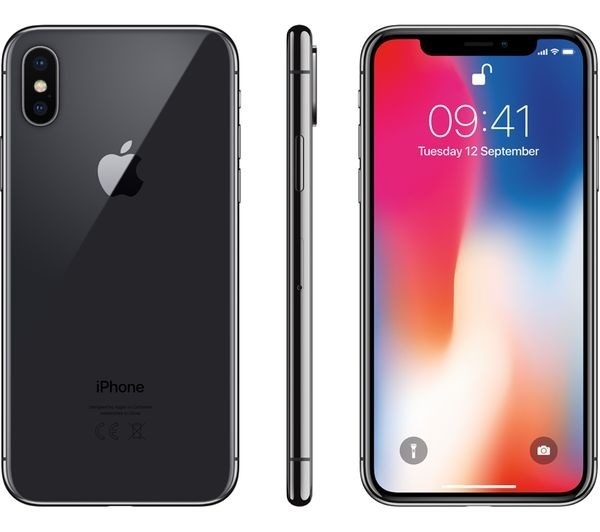
September 21, 2018: iPhone XS & XS Max
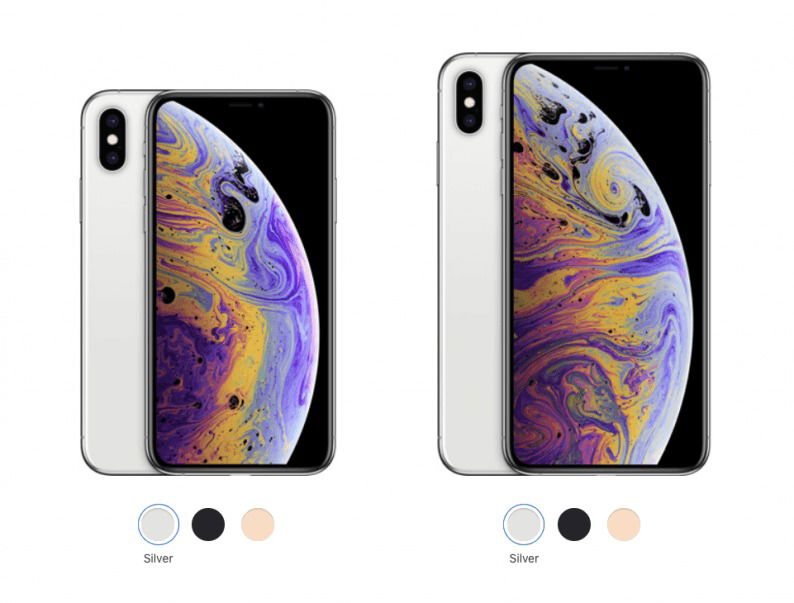
October 26, 2018: iPhone XR
